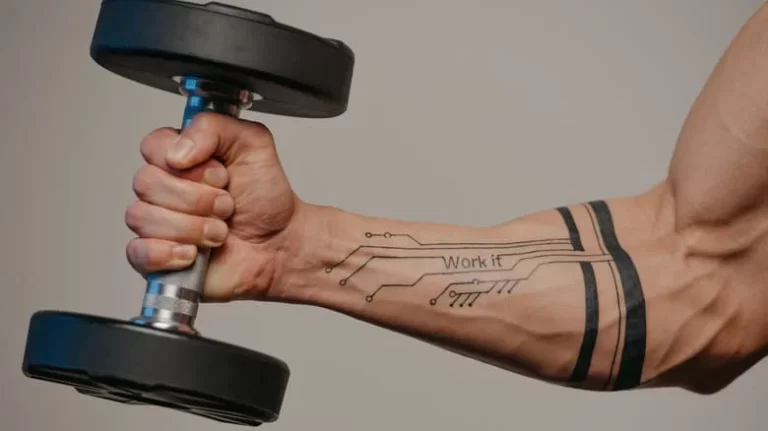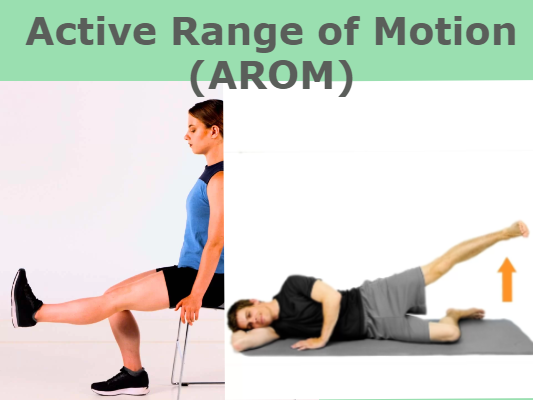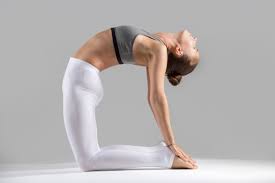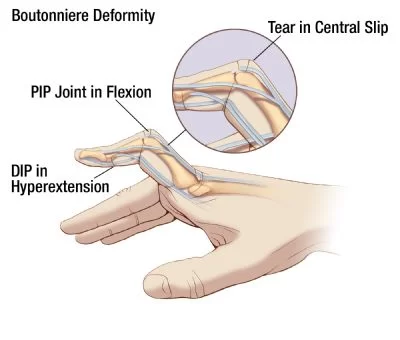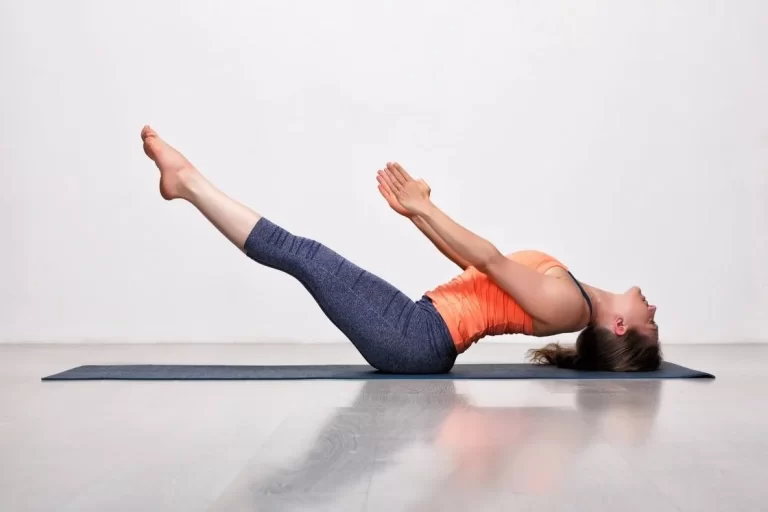Forearm muscle strengthening exercise: Health Benefits, How to Do?
Exercises To Make Your Forearms Bigger and Stronger
We mostly attention to the growing bulging of biceps and six-pack abdominals, the simple fact of the matter is that significant carrying strength is also concentrated in the forearm muscles. The forearm is an area that holds much tension, providing the avenue between your hands and your upper arm. This connection is vitally important when it comes to lifting heavy objects as it performs the majority of the resistance control. But aside from helping with daily living activities, your forearm muscles also play an important role in your overall appearance.
Having a vascular, thick forearms is a typical sign of functional strength that separates the gym junkies from the true strongmen. It is also the first thing about your body that people notice. While almost all other elements, with the exclusion of the head and lower legs, are concealed under clothes, it is common practice to have your forearms visible. For this reason, your forearms say a lot about you as a gym junkie.
These exercises strengthen and stretch the muscles crossing your wrists, hands, and elbows.You will use forearm muscles in your daily living such as opening a glass jar or carrying a suitcase up a flight of stairs. They are used in sports such as golf, racquetball, and basketball, too. Strengthening your forearms also improves grip strength, which is related to upper body strength.
A strong grip helps you to hold, carry, and lift objects in your daily living and during athletic activity. Plus, you will have more power when you work out, which will bring more strength to your entire body.Stronger forearms mean you will be able to squeeze your weights harder, engage more muscles, and generate more force in every move.
What are Your Forearms?
The region of the upper body between the elbow and the wrist, your forearms contain two long bones: The ulna and the radius. These two bones are joined to form the radioulnar joint which is joined by the interosseous membrane.
Forearm muscles
Your forearm has made up of several small muscles groups, including the flexors and extensors of the digits.
List of Forearm Muscles:
- Extensor Carpi Radialis Brevis
- Extensor Carpi Radialis Longus
- Extensor Carpi Ulnaris
- Flexor Carpi Radialis
- Flexor Carpi Ulnaris
- Flexor Digitorum Superficialis
- Brachioradialis
- Pronator Teres
Arterial supply
The two main arteries located in the forearms are the radial and ulnar arteries. The function of these arteries is to supply blood to the forearm. These usually run on the front face of the radius and ulna down the whole forearm.
Nerve supply
The posterior compartment is supplied by the radial nerve and the anterior compartment is supplied by the median nerve.
Now you know what is the forearm is comprised for you, you should be able to hit the best forearm workouts like a dead-set pro. Get the blood flowing and start flexing those extensors.
Health benefits of doing forearm muscle strengthening exercises?
- Helps to improve blood flow to your hands.
- Helps to warm your ligaments and muscles.
- Helps to improve the oxygen and nutrients that circulate through the joint’s membranes, triggering the process of removing cell debris from joints.
- Helps to Increase the flexibility of the joint.
- Helps to improve the range of motion of the wrist and radio-ulnar joint Helps to decrease joint injury.
- Helps to decrease the risk of injury by elongating the muscles .
- Helps to relieve pain in the hand and forearm.
- Helps to strengthen the muscles around the radioulnar joints for better support
- It encourages strength of the wrists and gripping strength which helps to make a grip during workouts in the gym.
- Helps to improve Grip strength.
- Helps to improve speed and power which is useful for throwing activities and other routine activities such as opening jars, carrying groceries, etc.
There have different forearm muscle strengthening exercises.
Dumbbell Wrist Flexion

How to do it?
- This is a simple exercise, the Dumbbell Wrist Flexion is a huge addition to your forearm workout. The movement helps to target and strengthen your wrist flexors, which are important to build grip strength.
- To accurately do a Dumbbell Wrist Flexion you have to Sit on the edge of a bench or a table by holding a dumbbell in your left hand.
- Place your left forearm on your left thigh, with the back of your left wrist on top of your left kneecap.
- Concentrating on isolating just your hand, slowly lower the weight as far as you can, maintaining a tight grip throughout the exercise.
- Without moving your arm off your thigh, curl the dumbbell toward your bicep.
- Slowly lower the dumbbell back to the initial position.
- Repeat this on the right side.
- Do this for 10-12 repetitions of 3 to 4 sets.
Dumbbell Wrist Extension
How to do it?
- This forearm exercise is essentially the inverse action of the dumbbell wrist flexion. The exercise allows you to target your wrist extensor muscles, helping to build forearm muscles and strength. To do a Dumbbell Wrist Extension accurately,
- Sit on the edge of a bench or a table by holding a dumbbell in your left hand.
- Place your left forearm on your left thigh, palm down, with your left wrist on top of your left kneecap.
- Concentrating on isolating just your hand, curl the weight up as far as you can towards your bicep, maintaining a tight grip throughout the motion.
- Slowly lower the weight back to neutral.
- Repeat this on the right side.
- Do this for 10-12 repetitions of 3 to 4 sets.

Reverse Curl
How to do it?
- This is one of the best forearm workouts you can perform to increase blood flow and help to build strength in an often under-utilized muscle group.
- Grab the barbell overhand at shoulder width with palms facing downward.
- Your upper arms should be against your sides, slowly curl the bar.
- When the top of your hands reach your anterior deltoids, squeeze
- Slowly lower the barbell back to the initial position, keeping tension.
- Do this for 10-12 repetitions of 3 to 4 sets.
Hammer Curl
How to do it?
- This is primarily a bicep exercise, the Hammer Curl is a compound exercise that allows you to concentrate lower arm muscles through a contraction.
- Not only is the Hammer Curl one of the best forearm muscle exercises, but it is also one you should be adding to all your arm workouts. for this exercise, you have to stand upright and hold two dumbbells at the side of the body with the arms straight and palms facing your trunk.
- Elevate right hand until the forearm is vertical and the thumb faces the shoulder. Hold this position for 2 to 3 seconds and squeeze your biceps.
- Slowly lower the dumbbell to the initial position and repeat with the left arm.
- Do this for 10-12 repetitions of 3 to 4 sets.
Zottman Curl
How to do it?

- This is a compound movement that is just about the best workouts you can do to increase your forearm muscle strength.
- For this exercise, you have to stand with shoulder-hip width apart with holding a dumbbell in both hands with palm facing your sides.
- Curl the dumbbell, keeping your upper arms in place.
- While lifting the weight, rotate the palms towards the face .your biceps are in the top position.
- Turn your palms to face down.
- Lower the dumbbells slowly, as in a reverse curl.
- Complete 2-4 sets of 8-10 reps per arm.
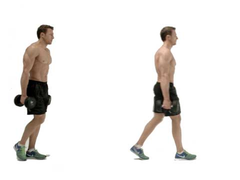
Farmer’s Walk
How to do it?
- This is the most basic forearm exercise on the block, the Farmer’s Walk is likely one you have to do unintentionally.
- This move builds your wrist and finger flexors, whilst also working to engage a wealth of other muscles in your body.
- Use this one to up the number of groceries you can carry. for this exercise you have to Stand with feet shoulder-width apart, grab a pair of heavy dumbbells by your sides, palms facing in.
- Walk forward with your shoulders engaged, your core should be tight and your spine should be straight.
- Walk for 15 to 20 steps at one time.
Chin-Up
How to do it?
- This is the complex movement that works out some muscle groups in succession, with a strong emphasis on your flexors.
- This is one of the best forearm exercises you can do at home.
- Grab the barbell with hands shoulder-width and palms facing you.
- Your core muscle should be, pull yourself up by contracting your shoulder blades together.
- Keep pulling until your chin is over the barbell.
- Hold at the top for 2 to 3 seconds.
- Slowly lower yourself to the initial position.
- Complete 2 to 3 sets. do 10 chin ups in every set.

Pull-Up Bar Hang
How to do it?
- This is the most simple forearm exercise on this list, the Pull-Up Bar Hang is a great body weight exercise which elements that will engage your core and boost those lower arm muscles.
- Specifically, this movement helps you to build your wrist and finger flexors.
- You can even do this forearm exercise at home.
- For this exercise, you have to Stand beneath a pull-up bar, reach up, and clutch the bar with a shoulder-width grip, palms facing forward.
- Elevate your legs from the floor.
- Hang at arm’s length for 30 to 40 seconds with your arms straight and your ankles crossed behind you.
Towel Pull-Up Bar Hang
How to do it?
- While almost the same movement as the Pull-Up Barbell Hang, this variation allows you to target your wrist adductors.
- Drape two towels, shoulder-width apart, over a barbell.
- Reach up and grab a towel in both hands with a tight grip.
- Engage your core and lift your feet off the ground, hanging with your ankles crossed behind you for as long as you can.
- Hold for 30 to 40 seconds.
Behind-the-Back Cable Curl
How to do it?
- This is Another forearm exercise that improves blood flow through brachioradialis contraction, the Behind-the-back Cable Curl will require some setup but it is worth it. This exercise is similar to a standard curl, however, it begins from an over-directed position, meaning you have to emphasize elbow contraction for greater forearm engagement.
- Attach a D-handle to the low pulley of a cable machine
- Grab the handle in your right hand
- Take a big step forward, ensuring some tension in the cable and your arm is drawn slightly behind your body.
- Curl the handle but do not allow your elbow to point forward.
- Complete 4-5 sets of 10-12 repetitions
EZ-Bar Preacher Curl
How to do it?
- For this exercise, you have to Sit at a preacher bench and hold an EZ-curl bar at shoulder width with arms extended.
- Keeping a slight flexion in your elbow, curl the barbell, keeping the backs of your arms against the bench.
- Flex at the top movement.
- Slowly lower the weight back to the initial position.
- Repeat
Towel Cable Row
How to do it?
- Using a towel over dumbbells or handles accentuates the tension on your wrists, increasing the intensity of the strain on your forearms. In this instance, this is a great example of how to work on your back and forearm muscles simultaneously.
- For this exercise, you have to Hook a towel to a cable pulley and stand in front of it.
- Slightly flexed your knees, keeping your back upright.
- Grab an end of the towel in both hands, squeeze your shoulder blades together.
- Pull the towel towards you in a rowing motion.
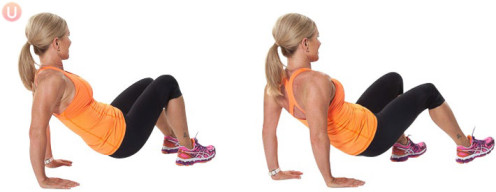
Crab Walk
How to do it?
- This exercise may seem a look awkward and counterproductive, but the Crab Walk is a great forearm exercise for muscle growth.
- For this exercise you have to Sit on the floor, facing upwards.
- Bridge up with your hips so you are on all four limbs.
- Walk forward on your hands and feet as fast as you can do.
- Do this for 10 steps forward and10 steps backward.
Dead hangs
How to do it?
- Grab the barbell and hold yourself there for as long as possible, with your elbows slightly flexed.
- Squeeze your shoulders blade together and down to engage your lattissimus. Keep your core tight throughout the exercise.
- This exercise helps you to develop grip strength and is easier than doing pull-ups.
- Complete 2–3 sets of 20–60 seconds.
Forearm pull
How to do it?
- Hold the weighted barbell of a pulley machine at shoulder level, with your palms facing down.
- Draw your upper arms in toward the side of your trunk.
- Push the all barbell way down.
- Pause, then return to the initial position.
- Do 2–3 sets of 8–12 repetitions.

Forearm squeeze
How to do it?
- For this exercise, you have to Use a pair of forearm grips or another object that you can squeeze, such as a tennis ball or a sock.
- Flexed and then extend your fingers to squeeze the ball.
- Hold for 5–8 seconds, then relax your grip for a few seconds.
- Continue for 10–20 minutes.
- Do this 3–4 times per day.
Fingertip pushups
How to do it?
- Kneel on a bench or a steady object and bring your fingertips down on the surface.
- Slowly and with control, bring your chest to the bench, flexed your elbows up to a 90-95 degree angle.
- Return to the starting position.
- Do 2–3 sets of 8–12 repetitions.
- For an extra challenge, try this exercise with your fingertips on the floor instead.
Plank with shoulder taps
How to do it?
- For this exercise, you have to Kneel on the floor or a yoga mat.
- Put your hands directly under your shoulders — like you are about to do a pushup.
- Curl your toes under and raise your body into the plank position, Steady your core muscle.
- Lift your left hand from the floor and touch your opposite shoulder.
- Then, return your hand to the ground.
- Lift your right hand from the floor, touch your opposite shoulder, and return your hand to the ground.
- Do this exercise for 40–60 seconds, or however long you can do it.
- Repeat 3–4 times.
Drag Curl exercise
How to do it?
- Do as you would the conventional dumbbell curl, but stand tall.
- Move your elbows back as you curl so the head of each dumbbell touches the front of your body throughout the exercise.
- Keep your palms facing up the whole time.
- It should look as though you are dragging the weights up along your trunk.
- Complete 2-4 sets of 10-18 reps.
Parallel Bar Hand Walk
How to do it?
- For this exercise, you have to Hang from a jungle gym or length of parallel bars.
- Now Walk forward on your hand to the end of the row and walk back with your hands.
- Do this exercise for 40–60 seconds, or however long you can do it.
- Repeat 3–4 times.
Wrist Roller
How to do it?
- Grab a wrist roller (we like Rogue) with each hand and extend your arms straight out in front of you.
- Fix a 3- to 5-lb weight plate (or kettlebell) to the bottom of the cable.
- With palms facing down, turn your wrists toward your body and roll the apparatus between your hands to inch the weight up until the cable is wrapped around the wrist roller.
- Then, slowly lower the plate down by reversing the motion.
- Make sure to keep your arms extended throughout the exercise.
- Do 10 to 20 repetitions for 2 to 3 sets
Rope Climbs
How to do it?
- For this exercise fixed the rope securely to the ceiling, then reach up and hold it between in each hand.
- Pull your body up as you use your legs to lock the rope between your feet.
- Repeat the movement, keeping the rope between your feet at all times, then reverse it to lower back down.
- Since this will tax your forearms (as well as core, back, and upper arms), rest for 3 to 4 full minutes in between climbs.
Plate Pinch Hold
How to do it?
- Grab a heavy-weight plate in either hand (you can also stack a few 10-15 pound plates together, smooth side out).
- Squeeze the weight plate between your thumb and fingers as hard as possible, then let your arms hang at your sides.
- Hold for as long as you can, resting for 60 to 70 sec between repetitions.
- You can also perform plate pinch rows and carries to exhaust your forearms.
Cautions and modifications
- If you are not sure where to start or would like some guidance, then visit a physiotherapist or fitness expert. They can address any specific concerns you may have, set you up with a routine, and make sure you are doing the exercises correctly.
- When performing these exercises, only go to the degree that is appropriate for your body. Be gentle, and make sure you can maintain controlled breathing, smooth movement that mimics your movements. Avoid any jerky movement.
- Stop if you are feeling pain or anything beyond a mild sensation. If you feel soreness after these exercises, ice the affected area and try light stretching to reduce tension over the muscle.
- If you have any recent injuries or medical concerns that could be affected by forearm exercises, it is best to avoid them or do them under the guidance of a doctor or physiotherapist.
When did you not do these exercises?
- If your forearm or wrist bone is recently fractured.
- If you are already suffering from wrist pain.
- If you feel any pain or discomfort during these exercises then stop immediately and consult your therapist.
- If your doctor advised you to take a rest.
- Do not do this exercise when you feel muscle pull or any undiagnosed contraction of the muscle.

